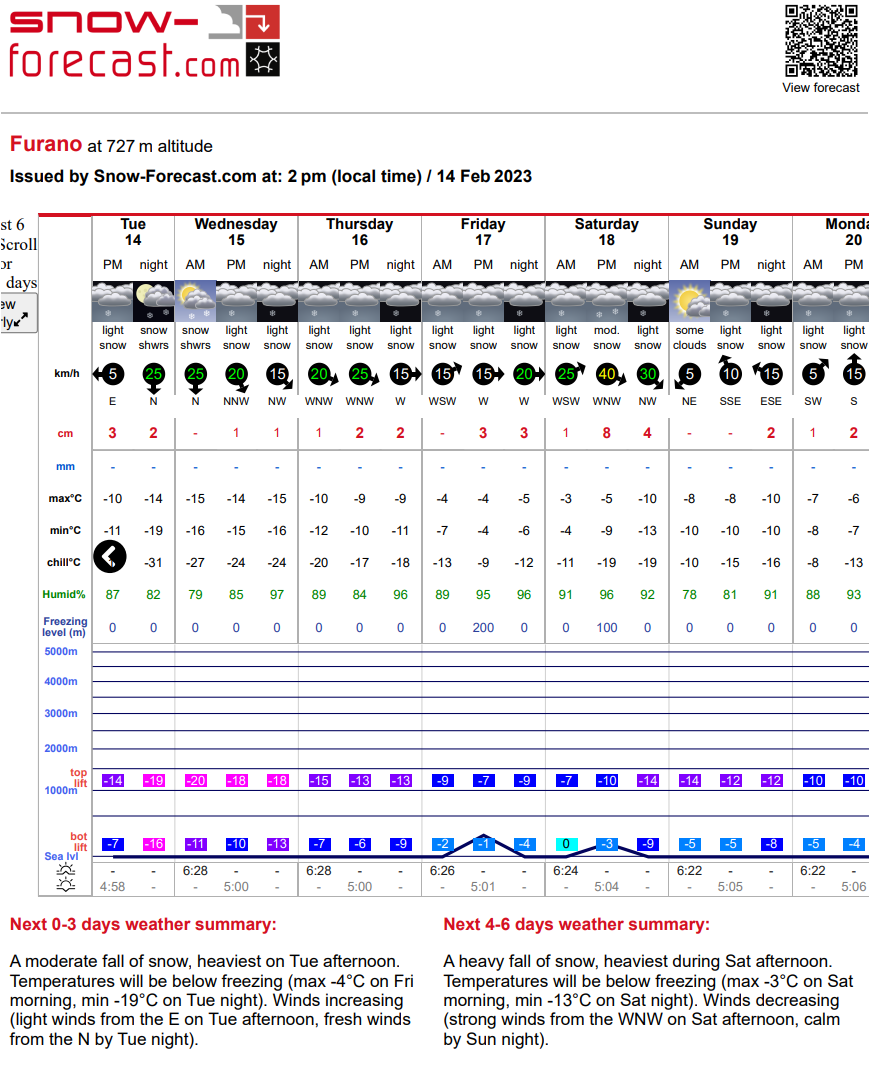
Dry Loose
Probably because I have not been to the big mountains recently, I have not heard about any accidents or serious signs of instability, aside from there obviously being a lot of loose fresh snow.. Although it snowed a little overnight, Yesterday was a fine day for a time in Central Hokkaido.
I know a lot of people that found very deep snow conditions over the last several days.

Glide Avalanches
My biggest concern is that the glide cracks are starting to open up and move a lot more. On Friday (20220217), the freezing level will rapidly rise several degrees and the temperature in the Furano Valley will likely reach 0 degrees Celsius.
This will be a dangerous time especially if it is a fine day because much of the cracked steeper terrain is likely at higher probability of collapsing catastrophically. So if it is ever a day significantly warmer that the previous day or the temperature is still increasing, limit time spent in the large gorges of the Furano Mountains. The destructive power of these types of avalanches is often earth damaging so be careful and stay away from the major terrain traps during these times. They can also just collapse anytime and run surprising distances.

Wind Slab
…Generally, this means that after and during storms it will become easier to trigger slabs around steep faces, especially when loaded by the prevailing NW winds, and that any potential avalanches can run further and gain momentum on these firmer layers.
It has snowed a lot in the last week or 2 with the high mountains of Central Hokkaido getting a meter or more of snow. 3-4 weeks ago was the dry period where it barely snowed in Central Hokkaido and the 20200113/14 temperature crust layer was unstable in places for some time, this layer was discussed and tested near Furano and to the NW.

Cornice Fall
large cornices have formed over the past 2 weeks. I have heard stories of skiers triggering large cornice falls that ran from alpine ridge lines all the way into low elevation creeks.
Avalanche problem diagrams courtesy of avalanche.org

